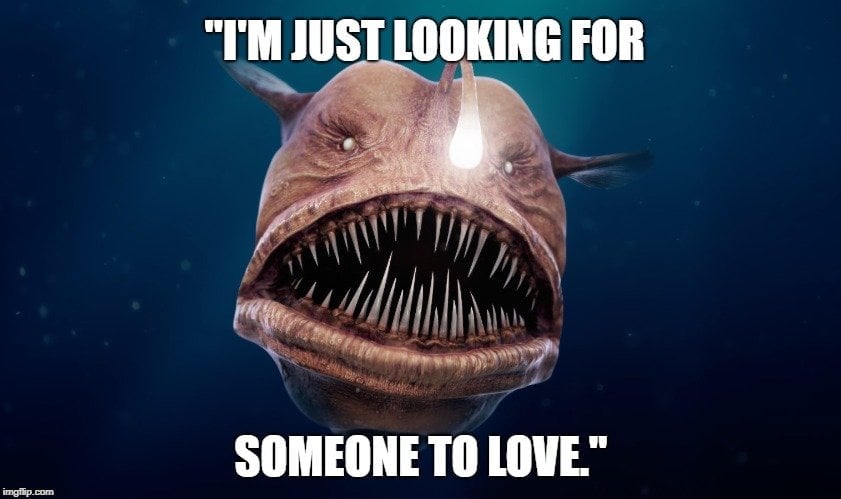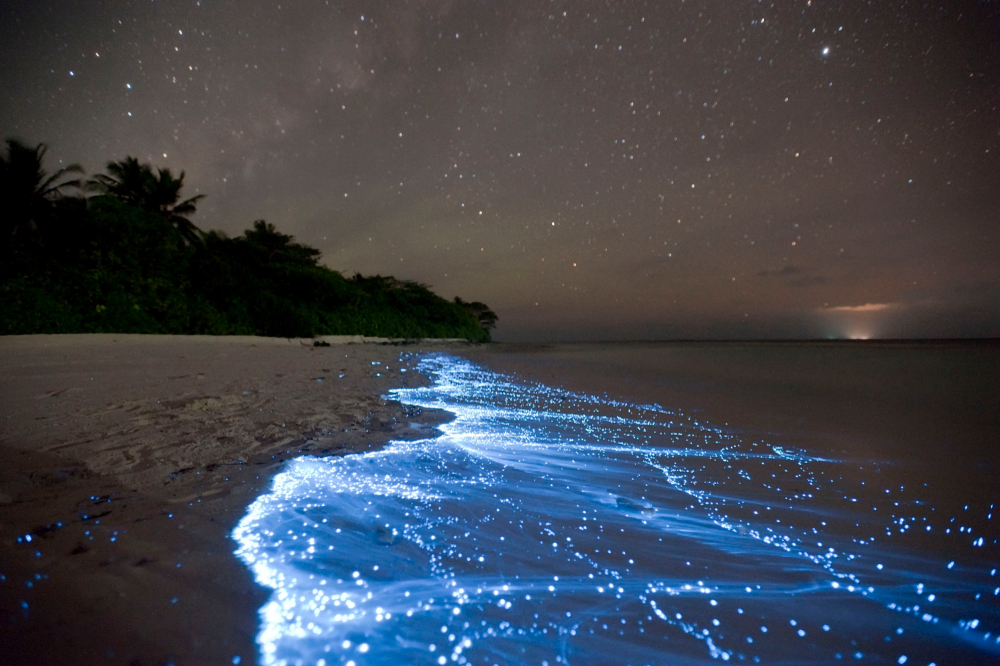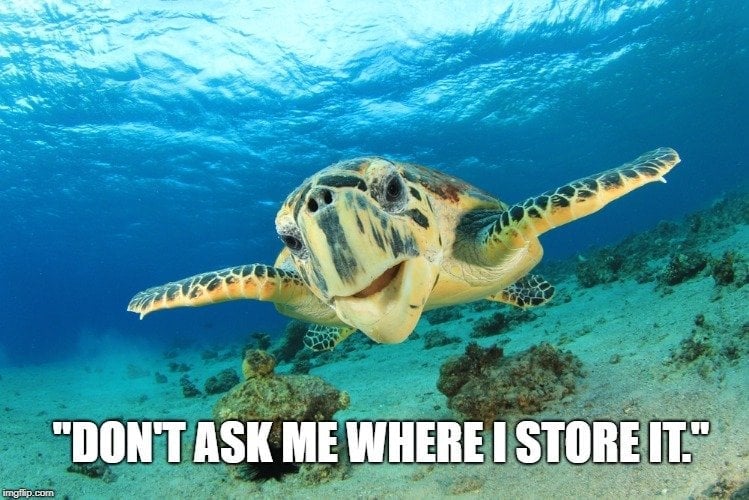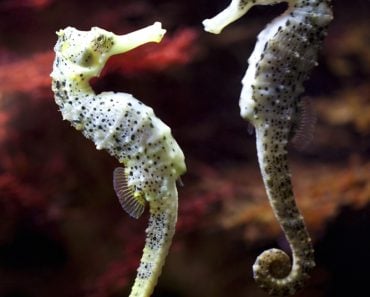Table of Contents (click to expand)
There are many ways that rare sea creatures find each other to breed. Some use pheromones to attract mates, while others use bioluminescence or follow natural signals. Some species are hermaphrodites, which allows them to reproduce with any other member of their species, and others are able to store sperm for later use.
Anyone who has ever floundered in the dating pool of life understands how hard it can be to meet a potential partner. It may take months, years or even decades of awkward dates and lonely evenings before you find the right person, someone to whom you want to devote your time and energy. Depending on where you are searching for a mate, what your standards or desires are in a potential partner, and how you approach the “mating ritual” will all impact your success or failure. Navigating the deep waters of attraction, sex, partnership and procreation is no easy task for humans.

Fortunately, there are more than 7 billion humans on the planet, and we are linked in countless ways through technology and the Internet, which makes it possible to search for, communicate with and locate other members of our species at the touch of a button. That isn’t the case for many of the other species on this planet…
Recommended Video for you:
The Deep Sea Dating Scene
What if there were only a few dozen potential mates for hundreds of miles around, it was completely pitch-black at all times, and you were half a mile underwater? That is the reality for some of the deep-sea creatures who live in the most isolated, unforgiving and inaccessible environments on the planet.
Despite the seeming impossibility of their survival, there are thousands of species of relatively rare sea creatures who have evolved and survived for tens of millions of years. And as we should all know, perpetuating a species requires reproduction in some form, which typically suggests two organisms, one male and one female, coming together to join egg and sperm, respectively. In the complete void of the deep ocean, how can these rare creatures find each other in order to breed?

Techniques For Attraction
To continue the analogy we began with, if humans want to improve their odds of landing a mate in the dating pool, there are certain techniques and strategies that can provide an advantage. The way you dress, the way you smell, the places you frequent and even your willingness to compromise will all affect your chances of finding a good mate.
As you might expect, the same thing is true in the frightening, pressurized depths of the ocean. Over the course of millions of years, deep-sea beasts have evolved their own creative means of attracting and securing mates, thus ensuring that their genes – and species – will carry on into the future.
Pheromones
Many different species of animals utilize pheromones that are produced in various glands around the body. These can be used for communication, but they are also closely linked to reproduction and the attraction of a mate. In the depths of the ocean, animals like sea lampreys, anglerfish, and many other fish species release pheromones into the water, which can be detected by other species members, even from long distances, drawing potential mates for a rare breeding interaction.
Bioluminescence
One of the most beautiful adaptations in nature is bioluminescence, and is found in many different creatures, from jellyfish and sharks to more than 1,000 species of fish. Bioluminescence is the production of light by living creatures, typically yellow, green, or blue in nature. Even some terrestrial creatures boast bioluminescence, such as fireflies, certain land snails and beetles, among others. In the pitch-black depths of the ocean, being able to illuminate and glow is one of the most effective means of attracting a mate. Creatures like lanternfish and anglerfish, as well as some cnidarians, crustaceans and mollusks, use bioluminescence to shine a light in the darkest corners of the sea.

Following Natural Signals
Some sea creatures can release hardy eggs and sperm into the water that can survive for long periods of time, until other members of their species come across the reproductive materials. The release of the eggs and sperm is often in conjunction with environmental triggers, such as tidal changes, temperature, seasonal changes and lunar cycles. This is known as spawning, and relies heavily on chance of sperm moving through the water and inseminating the eggs. Some fish species also build “nests” and release their eggs in a specific area, often close to a male whose sperm she wants for her eggs. Char, cod and salmon are some fish that use external fertilization. Some species will also gather at mass breeding sites for both internal and external fertilization.
Sex Organs
When encountering another member of your species is so rare, it helps if you have both sets of sexual organs. Some species are unable to asexually reproduce, but if they meet another viable partner, they are able to reproduce, thus improving their chances to pass along their genetic material. There are more than 20 families of fish that are natural hermaphrodites, including grouper, parrotfish, sea bass and snook.
Saving Sperm
If conditions aren’t appropriate for bearing offspring, some creatures are able to store sperm from a previous sexual encounter with another of their species. Certain sea turtles, for example, can store sperm until conditions are optimal and their offspring have the best chance of survival.

Gender Shifting
Somewhat related to hermaphroditic species, when the number of males in a given community or ecosystem is low, females of some species can turn into males; this is found in wrasse fish. On the other hand, in clown fish, when the number of females is low, males can shift genders in order to boost reproductive potential in the species.
Male Parasitism
In one of the most extreme cases of reproductive adaptation, male anglerfish actually fuse onto the female’s body, losing much of its consciousness and control. They become something akin to parasitic tumors attached to the females, benefitting from their bloodstream and nutrients, while serving the purpose of injecting sperm into the female directly.

A Final Word
The most extreme depths of the ocean remain mysterious and largely uncharted, but there are thousands of sea creatures down in the darkness that have found creative and exceptional ways to survive – and even thrive. Once again, the timeless words of Dr. Ian Malcolm (Jeff Goldblum) from Jurassic Park ring true… “Life finds a way!”
References (click to expand)
- Reproduction in the deep sea - Shark Research. sharkresearch.earth.miami.edu
- Is It Love? Why Some Ocean Animals (Sort Of) Mate For Life. The Smithsonian Institution
- Hoving, H. J. T., Lipinski, M. R., Videler, J. J., & Bolstad, K. S. R. (2009, November 10). Sperm storage and mating in the deep-sea squid Taningia danae Joubin, 1931 (Oegopsida: Octopoteuthidae). Marine Biology. Springer Science and Business Media LLC.
- A blind date in the deep sea: First-ever observations of a living .... The University of Washington













